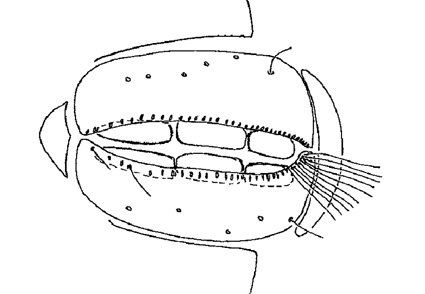Abstract
A new water mite species of the subgenus Septlebertia Imamura, 1954, Lebertia boldyrbekensis sp. n. is described from running waters in the Republic of Kazakhstan. An identification key for all species of the subgenus Septlebertia is presented.
References
Gerecke, R. (2009) Revisional studies of the European species of the water mite genus Lebertia Neumann, 1880 (Acari: Hydrachnidia: Lebertiidae). Abhandlungen der Senckenberg Gesellschaft für Naturforschung, 566, 1–144.
Imamura, T. (1954) Studies on water-mites from Hokkaido. Journal Hokkaido Gakugei University, Series B, Supplement I, 1–148.
Semenchenko, K.A. & Tuzovskij, P.V. (2010) New records of water mites of the genus Lebertia Neumann (Acariformes, Hydrachnidia) from Asian Russia with the description of three new species. Euroasian Entomological Journal, 9 (3), 413–423.
Tuzovskij, P.V. (1987) Morfologiya i postembrional’noye razvitiye vodyanykh kleshchey [Morphology and Postembryonic Development in Water Mites]. Nauka, Moscow, 172 pp. [in Russian]
Tuzovskij, P.V. (2004) Toward the systematics of the water mite Lebertia convergella Tuzovskij (Acariformes, Lebertiidae). Acarina,12 (2), 105–107.
Viets, K. (1956) Die Milben des Süßwassers und des Meeres. Hydrachnellae et Halacaridae (Acari). II. und III. Teil: Katalog und Nomenklator. G. Fischer, Jena1, 870 pp.
Wang, Y., Wang, J.L., Jin, D.C. & Guo, J.J. (2020) Taxonomic notes on water mites of the genus Lebertia (Acari, Hydrachnidiae, Lebertiidae) from China. Systematic & Applied Acarology, 25 (1), 17–30. https://doi.org/10.11158/saa.25.1.2


